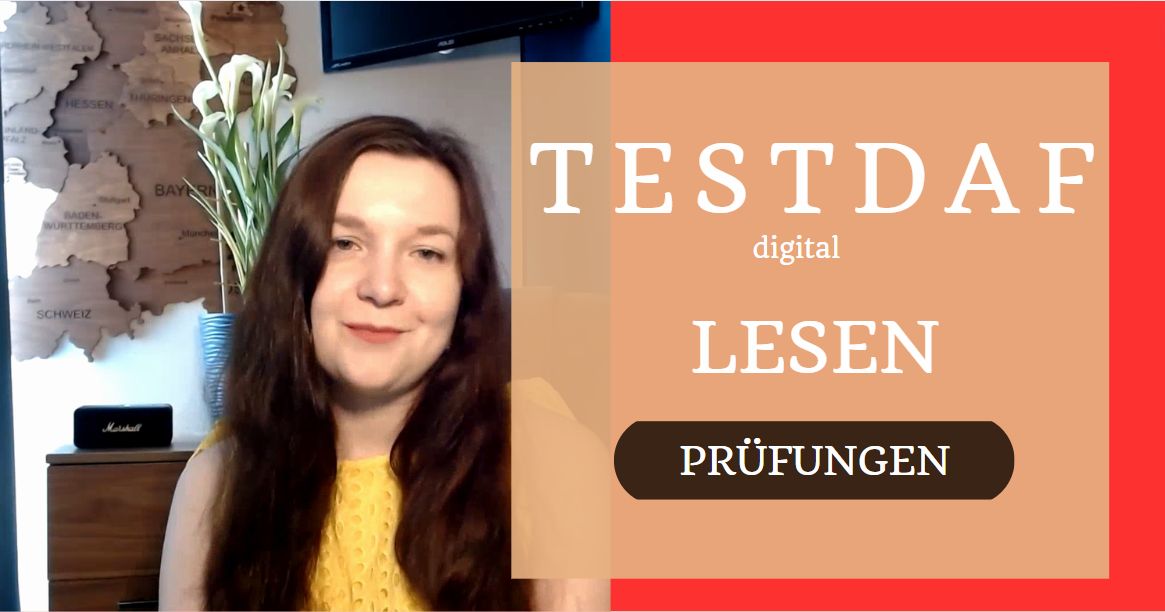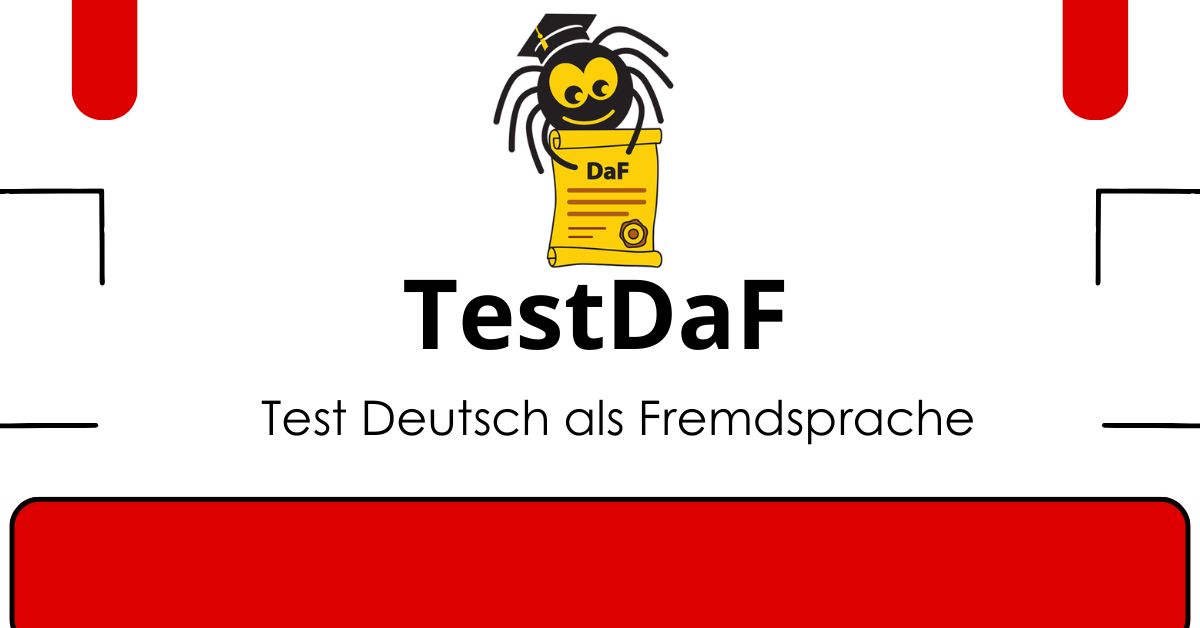
A special feature of the reading section in the digital TestDaF is the vast number of different tasks. No other international German exam offers such variety. There are seven types of tasks and a total of 34 items. All tasks are time-limited, and taking the exam on a computer means no extra seconds. Once the time is up, the program will automatically redirect you to the next task.
Each type of task targets specific skills that you can acquire in the TestDaF digital reading preparation course. You can practice and prepare for the exam in the "Exams" section, where you can test yourself in a realistic exam environment and receive a result with an approximate grade to ensure your readiness or understand where you need better preparation.
In the first type of task, you need to choose the correct word from the four suggested options. The interesting thing is that if it's nouns, they all have the same gender; if it's verbs, they are all in the same form. Thus, the simplest clues will not work. You need to have a good grasp of the context, understand the connections between verbs and nouns, and be well-versed in the vocabulary for scientific texts about research and experiments.
In the second type of task, you need to establish the correct order of the text paragraphs. It seems simple, but it is actually more difficult than it appears. The text usually talks about one study or concept. At first glance, everything seems to fit together. This task targets the understanding of linguistic connections. You need to pay attention to conjunctions, definite and indefinite articles, pronouns, etc.
The third type of task is the traditional multiple-choice: a fairly extensive text with questions that have four answer options. The task is made easier by the clear connection of the question to a specific paragraph. Understanding how to work with a specific type of question helps, as it is usually consistent.
The fourth type of task is usually the most unclear for those who have not had targeted preparation. This task targets the understanding of communicative intent. It can be well-practiced if you understand the approach. Here you need to understand what the author wanted to express in a particular paragraph, for example, surprise, doubt, prediction, etc.
The fifth type of task consists of a text with seven statements and four answer options, including two categories, the option "both" and "none". The peculiarity of this task is that the questions do not correspond to the sequence of the text. Therefore, you will have to search for the answers everywhere.
The sixth type of task is dedicated to so-called language pairs. There are eight statements, of which only four correspond to the content of the text. After finding the four correct statements, you need to sort them by language pairs, such as cause and effect.
The seventh task involves summarizing information from various sources - a text and a statistic presented in a graph or chart. In the summary, you need to choose three sentences that contain information inconsistent with the sources.
Overall, this test format can be considered excellent preparation for academic studies. These seven types of tasks cover the main language activities. Thus, by preparing for the exam, you are working with a language level that ensures high-quality education in German-speaking higher education institutions.
Worth reading next

The TestDaF Exam for Applicants, Students, and Researchers
- Registration procedure
- Exam duration
- When and where to find your results

TestDaF Digital Schedule for 2026
We recommend that our students plan their TestDaF exam well in advance in order to have enough time for preparation and, if necessary, a retake.
Read More
German Certificates for Colleges and Universities
In the video, Alina Zakrevska, founder of the Pauker Club language school and a German teacher, explains the requirements for admission to German universities.
Read More